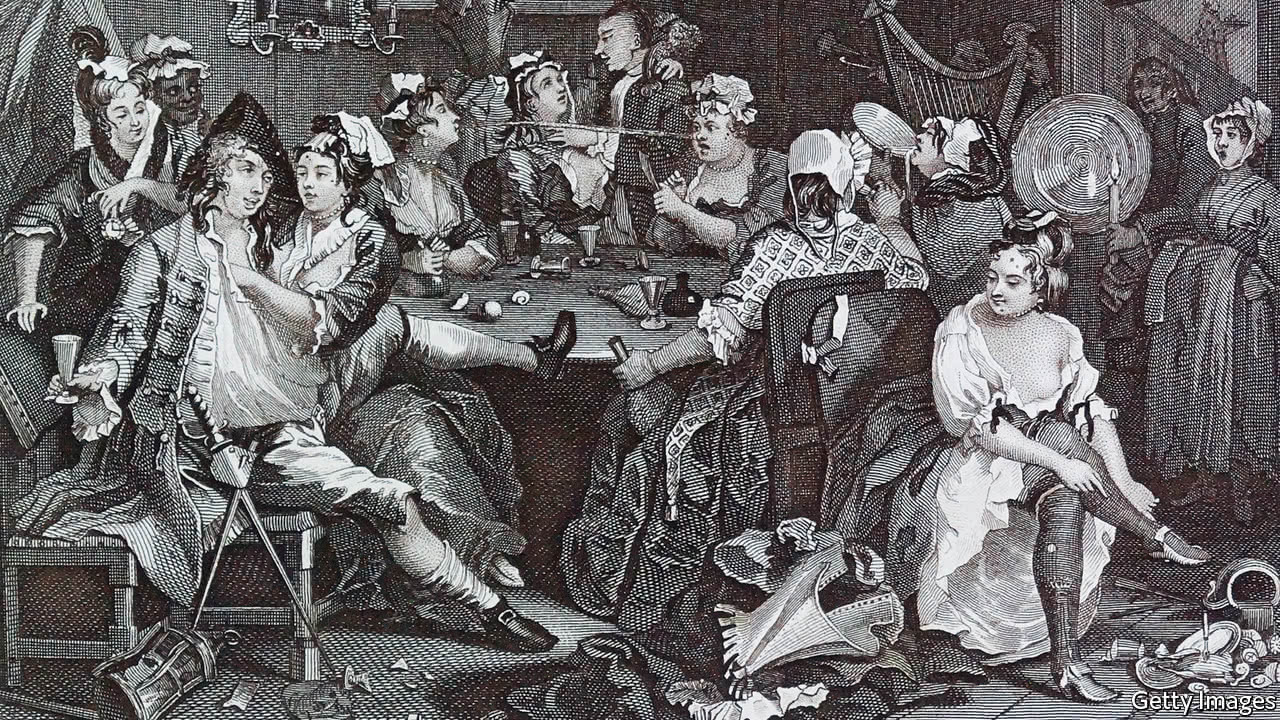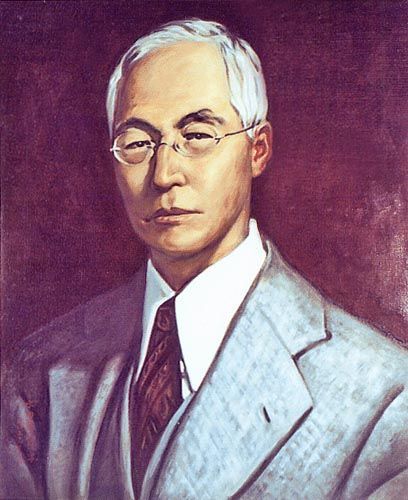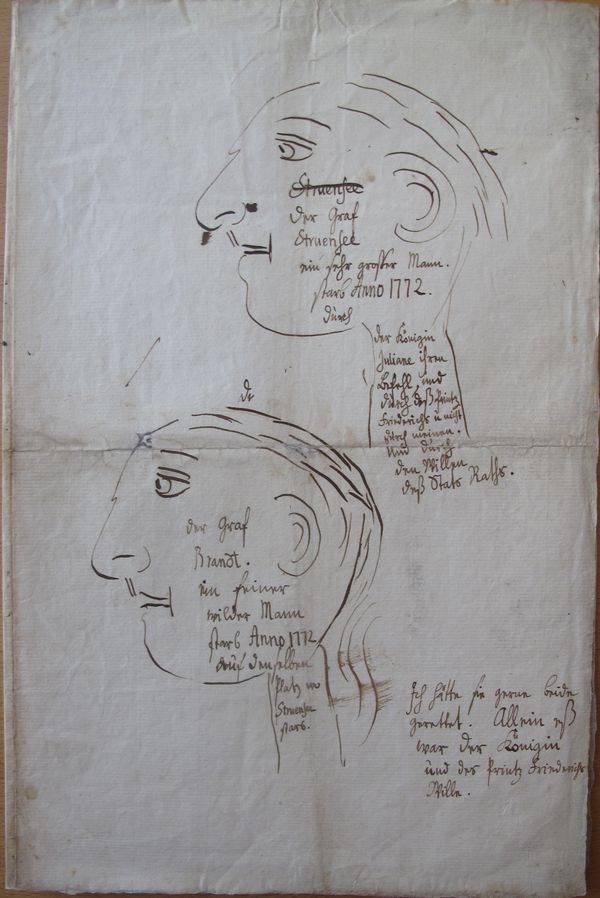Written By Marcus McKee, TC 22'
Edited By Natalie Simpson, GH 23'
Prostitution was abounding in Early Modern London, as poor ‘nightwalkers’ roamed the seedier neighborhoods and high-class courtesans entertained the upper nobility. Prostitution was not only the work of females, with various accounts of so-called “molly houses” in which men engaged in homosexual activities. Even with these homosexual men, however, prostitution was intertwined with femininity, as they would often dress and act as women while in the molly houses[i]. Outside of actual prostitution, words such as ‘whore,’ ‘strumpet’ and ‘bawd’ were frequently used as gendered insults. One need only look at the Old Bailey Records to see that many killings were caused by a woman being insulted and called a whore. In one such instance, Elizabeth Pew was found guilty of murder after an altercation in which a man “[calls] her a great many ill Names, [he] told her, she was a Bitch and a Whore, like her Sister. She said, Don't provoke me so, for fear I throw something at you. She had a Case-knife in her Hand, and she threw it at him, and it struck in his Side.”[ii] Prostitution was not only extremely prevalent, but it was also embedded in a complex web of different jobs surrounding the selling of sex. Sometimes, there would be houses which had rooms for the prostitutes to take customers, while other times there would be a brothel or ‘bawd-house’ with a constant supply of women for its customers.
Additionally, there were various networks of pimps, keepers and procurers who would ferry the women around.[iii] The work of procuring the women and keeping was done by the “bawd” (mostly women), while the “pimp” (mostly men) would help the bawd move around different women to other locations. Prostitutes also captured the attention of high society, most famously in Hogarth’s A Harlot’s Progress but also through novels such as Daniel Defoe’s Roxana.
Suffice to say, prostitutes were not hidden to the average Londoner, and their large presence was often a cause for moral panic. The depiction of prostitution was expressly linked to ideas of what womanhood should not look like.
For many Londoners, the prostitute was a symbol of the filth and vice of the city’s criminal world, which was inextricably linked with the poor.[iv] The prevailing assumption was that these crimes were a threat to social order and were “the results of choices made by individual[s]… one aspect of a broader constellation of illegal and immoral behaviour.”[v] If London’s underground was a site of temptation, enticing young men into sinful vices and corrupting young women, what better scapegoat than prostitution? In tandem with the Reformation, prostitution became increasingly more repressed as the amount of trials for sexual crimes increased dramatically.[vi] Prostitution was one of the many types of immoral behavior that critics of London believed made the city a center of vice. Along with governmental restrictions, groups such as the Society for the Reformation of Manners, which funded legal prosecution against those believed to be performing heinous immoral acts, acted as ‘protectors’ of social order. Their primary concern was the suppression of “impiety and debauchery”[vii] to keep the nation from falling into chaos. By 1723 the London and Westminster chapters of the Society boasted of prosecuting 1,658 cases related to prostitution[viii]; their pamphlet offers a distillation of the moral panic that surrounded acts of sexual immorality:
The Usefulness of such Confederacies is visible from what has been actually brought about by Means of the said Societies, beyond what could have been hoped for from any private Endeavors. Multitudes for 26 Years last past, have been prosecuted and punished according to Law, for lewd and scandalous Practices. Great Numbers of Bawdy-houses, and other disorderly Houses, have been suppressed and shut up, and the Streets were very much purged from the wretched Tribe of Night-walking Prostitutes, and most detestable Sodomites. Many young Men, taken with lewd Women, have, by their being brought to timely Shame and Punishment, been discouraged and turned (as we have reason to hope) from following such sinful Courses, which often cause them to defraud their Parents, Masters, &c. and bring themselves to utter Ruine.[ix]
Despite these efforts, Reformation movements had little to no effect on the prevalence of brothels and prostitutes.[x] The brothel culture of London was so widespread that tourists could purchase Harris’ New Atlantis, a guide to the various women of London complete with their location, characteristics and specialties.[xi]
It is important to note that the Society considered their best effect to be preventing young men from consorting with prostitutes, rather than stopping women from going into the profession.
For many Londoners, the reasons why a woman would join this profession were not popularly understood: rather than an economic choice, it was viewed as a moral failing of the woman. Many women in the business viewed it as a short-term way to make ends meet before eventually being able to marry, while others were tricked by procurers or their master.[xii] In broader terms, what exactly constituted a “prostitute” was not well-defined. In modern understanding, a prostitute is involved in the exchange of money for sexual favors. However, this is not the case in its usage in Early Modern London. Oftentimes it is unclear in legal records whether the defendant is being prosecuted for prostitution or some other kind of sexually immoral act. ‘Whore’ was often interchangeable with the word ‘prostitute’ before the middle of the eighteenth century, and it simply meant that a woman was unchaste.[xiii]
This vagueness is exemplified in the accounts of Samuel Pepys’ diary. In one passage, he mentions that he “was sorry to hear that Sir W. Pens maid Betty was gone away yesterday, for I was in hopes to have had a bout with her before she had gone, she being very pretty.”[xiv] As for the other women Pepys meets or hires as servants, he frequently gropes them and takes them out for walks in the park or to eat fancy dinners. He often used his status as an influential civil servant to take sexual advantage of women, though some women would engage in their own sexual bartering. For example, a former servant allowed herself to be fondled for a shilling while another woman acted as his mistress for many years to help further her husband’s naval career.[xv] Even in cases when women are being prosecuted, historians have found it difficult to distinguish meaningfully between “professionals,” part-timers and mistresses. In many cases, a woman could be prosecuted for “enticing” a man just because he “deserted his service to set up house with a woman.”[xvi] Once again the blame is laid squarely on the woman, as tempting men away from what they “ought” to be doing was reason enough for them to be prosecuted as a “whore.”
Being convicted as a whore dealt a massive blow to any woman’s social standing. In a pamphlet by the Society for Promoting a Reformation of Manners, the author notes that, of the prostitutes who were sent to Bridewell Prison, “a considerable Number of them hath chose rather to be Transported to our Plantations, to work there for an honest Subsistence, than to expose themselves, by their lewd way of Living, to Shame and Punishment.”[xvii] Relegated by the legal system to almost complete subordination to their husbands,[xviii] most women were not able to distinguish themselves through any kind of economic or artistic ingenuity. Instead, a woman had to make sure that she maintained good reputation amongst her peers lest they begin to question her motives. This was even more important for single women, who were expected to find husbands to financially support them, a task made much harder if one had a bad reputation.
This reputation system was how many neighborhoods worked to keep social order, often with the general population of a certain area acting as arbitrators for disputes that arose, eventually bringing evidence to the authorities should the perpetrator not stop.[xix] The main legal recourse women had access to was suing for sexual slander, which they brought up five times more often than men.[xx] As touched upon previously, popular conceptions made women almost entirely culpable in cases of sexual misconduct and, as such, the word “whore” is pivotal in almost all these defamation cases. In one such case, Joanne Badger accuses Sara Overy of calling her “a whore, a common whore an over-ridden whore, a salt bitch…. [and having] played the whore aboard the shipp Duke of Yorke, and in the greate cabbin of Captaine Gadsent shipp, with a wante[?] to have a bagg of tobacco.”[xxi] Such cases required that the accuser prove the words were heard by other people, something which was often rather easy, as so much socializing and work was done outside or near windows and doors.[xxii] If the insult was not heard by others, then there would be no real consequences, unless the insulted reacted violently. However, if a rumor did take hold, the woman would quickly lose respect. “Whore” and its other variations were symbolic of any female misbehavior, denoting that the woman had a moral failing which, if left unchecked, could spread throughout the neighborhood and damage its moral character. Whoredom was thought to bring about direct effects to the households, with broken windows supposedly signifying a “bawdry house.”[xxiii] The effects of rumors were sometimes made painfully clear when neighbors would try and break a woman’s window, such as one man attempted by flinging a rock when he saw Samuel Pepys with his mistress Ms. Lane.[xxiv]
As these cases involved sexual immorality, they were tried through the consistory court system of the church rather than the official legal system. The punishments for women found guilty of misconduct were rituals of public shaming: women would be carted around their parish or be forced to wear a white sheet of penance.
Oftentimes they would be forced to ask their congregation for forgiveness.[xxv] These rituals allowed for a communal rejection of whoredom and for the community to publicly condemn “bad” womanhood. This communal repudiation was meant to strengthen the moral culture of the neighborhood, as it aimed to keep other women from performing immoral acts.[xxvi]
There was also a rich media landscape depicting prostitutes, both real and fictional. One such tradition was the existence of prostitute biographies and autobiographies. The stories had little, if any, description of the woman’s sexual exploits and instead relied on the scandal of female authorship or how the characters acted counter to female ideals.[xxvii]With rising literacy levels in London[xxviii] and a thriving press, reading news stories about prostitutes were also a popular form of entertainment. These news segments were more focused on violence committed by and on prostitutes, casting them in a negative light. One story alleges that two prostitutes robbed a man and threatened him with a knife, while in reality the women were not connected to a brothel and were acquitted of charges.[xxix] When violence was committed against prostitutes, they were often depicted as being at least partly to blame. One story writes “It is thought that she had given some of them [her assailants] the foul Disease, which caused them to commit that rash Action.”[xxx] Some women would be given a “whores mark,” a slit nose presumed to be a wife’s revenge on a mistress.[xxxi] John Dunton started a series of tracts called The Night-Walker which he vowed to “[publish] Monthly, ‘till a Discovery be made of all chief Prostitutes in England.”[xxxii] A strict moralist and member of the Society for the Reformation of Manners, Dunton would supposedly lecture prostitutes and other ne'er-do-wells on the evils of their ways, as well as responding to questions mailed in by readers. Upon mistakenly being given a note meant for a prostitute’s customer, he sent for a constable to commit her to Bridewell to “beat Hemp instead of carrying such abominable Messages.”[xxxiii]
Unlike the real-world ambiguity of prostitution and sexual immorality, fictional media focused on prostitutes being “lost souls” who eschewed God’s teachings.
As such the stories were laced with themes of conversion.[xxxiv] The structure of the sex trade was also important to artists attempting to accurately depict life as a prostitute. In the first plate from Hogarth’s A Harlot’s Progress series, the young Moll Hackabout is seen being tricked by an infamous bawd, as a pimp and customer leer in the background. According to historian Paul Griffiths, many works tended “to sectarianize ‘outsiders,’ to order them in formal, hierarchical groups with clear functions and roles, and to present them as peculiar and foreign, at some considerable distance from so-called conventional society.”[xxxv] Much like the communal rejection of the consistory court’s punishments, literature worked to emphasize the prostitutes as Other. Prostitutes were immoral actors who did not belong within normal society. This was often done by making a prostitute’s main motive sexual pleasure or the acquisition of wealth. In Daniel Defoe’s Roxana, the titular character becomes increasingly obsessed with money as the story goes on. This greed could be understood by contemporaries as denoting a connection to Jews. Laura Rosenthal writes that there was a “broader cultural context that increasingly understood Jews and prostitutes as posing similar kinds of ideological problems in eighteenth-century commercial culture.”[xxxvi] While bawds were most associated with Jewish greed –– abusing women by turning the sacred action of sex into a simple monetary transaction –– independent courtesans combined both of these stereotypes into one.[xxxvii] The caption for Hogarth’s second panel shows Moll being a kept mistress for a wealthy Jewish merchant. Harris’ New Atlantis guide even advertises one of the women as “Fit for high keeping with a Jew merchant.”[xxxviii]
As a prostitute becomes further swallowed by the London underworld, she becomes completely separated from Anglican cultural norms. At its most diametric, this depiction of the prostitute can be seen as an ideal mercantile man. In Daniel Defoe’s The Complete English Tradesman, he writes that having control over oneself and one’s business will lead to success; for prostitutes, the self and their business are one and the same.[xxxix] Not only is the prostitute the antithesis of traditional female values, but through her journey she also becomes “the early eighteenth-century masculine economic ideal.”[xl]
Early Modern London’s culture of prostitution is best understood as a moral panic largely specific to increased urbanization. Unlike more rural areas, neighbors were packed tightly into the same building or alley, with little privacy.[xli] Rumors were quick to spread, and without a centralized credit system a good reputation was the only way to get loans.[xlii] Community bonds were doubly important because London was a city of immigrants, meaning that one had to quickly make enduring connections if one wanted to survive. For many immigrants, job prospects were precarious, especially for women, who were not allowed to become apprentices. If a single woman became jobless, prostitution offered a way to make money until she could find another job or a husband. As a city of commerce, London was able to have a significant gradient of people on all parts of the economic scale.[xliii] For a woman whose social class was too low to marry into wealth, high-class prostitution offered similar luxuries.
For most Londoners, however, this amalgamation of economic precarity and growth was not factored in. Instead, the popular sentiments of the time individualized the difficulties that London’s citizens faced. Under this logic, prostitution was a failure of one’s morality. In the public imagination, prostitutes were not escaping abject poverty, but were instead seen as greedy and were thus understood as Jew-like. Rather than escaping the constricting societal pressures of marriage and household duties, they were seen as pleasure-seeking deviants, unable to control their lust. Prostitution, as constructed in the popular imagination, represented the epitome of immoral womanhood, and thus opposing it was the only moral option.
Endnotes
[i] Trumbach, “Sex, Gender, and Sexual Identity in Modern Culture: Male Sodomy and Female Prostitution in Enlightenment London.”190.
[ii][ii] Old Bailey Proceedings Online (www.oldbaileyonline.org, version 8.0, 08 December 2019), October 1734, trial of Elizabeth Pew (t17341016-16).
[iii] Griffiths, “The Structure of Prostitution in Elizabethan London.” 44.
[iv] Sharpe, Crime in Early Modern England, 1550-1750. 91.
[v] Beattie, Policing and Punishment in London 1660-1750. 1.
[vi] Hillman and Ruberry-Blanc, Female Transgression in Early Modern Britain. 80-81.
[vii] Societies for Reformation of Manners, The Nine and Twentieth Account of the Progress Made in the Cities of London and Westminster, and Places Adjacent, by the Societies for Promoting a Reformation of Manners; by Furthering the Execution of the Laws against Profaneness and Immorality, and Other Christian Methods. ..., 2.
[viii] Societies for Reformation of Manners., 1.
[ix]Societies for Reformation of Manners, 3.
[x] Griffiths, “The Structure of Prostitution in Elizabethan London.”
[xi] Porter, London.
[xii] Griffiths, “The Structure of Prostitution in Elizabethan London.” 52.
[xiii] Dabhoiwala, “The Pattern of Sexual Immorality in 17th & 18th Century London.” 87-88.
[xiv] Latham, The Illustrated Pepys. 54.
[xv] Dabhoiwala, “The Pattern of Sexual Immorality in 17th & 18th Century London.” 89.
[xvi] Dabhoiwala. 90.
[xvii] Mackie, The Commerce of Everyday Life. 122.
[xviii] Gowing, “Language, Power and the Law: Women’s Slander Litigation in Early Modern London.” 26.
[xix] Archer, The Pursuit of Stability: Social Relations in Elizabethan London. 74.
[xx] Gowing, “Language, Power and the Law: Women’s Slander Litigation in Early Modern London.” 28.
[xxi] London Metropolitan Archives DL/C 236. 52r.
[xxii] Archer, The Pursuit of Stability: Social Relations in Elizabethan London. 76.
[xxiii] Gowing, “Language, Power and the Law: Women’s Slander Litigation in Early Modern London.” 28-32.
[xxiv] Latham, The Illustrated Pepys. 69.
[xxv] Gowing, “Language, Power and the Law: Women’s Slander Litigation in Early Modern London.” 33.
[xxvi] Hillman and Ruberry-Blanc, Female Transgression in Early Modern Britain. 73.
[xxvii] Smith, “Defoe’s The Complete English Tradesman and the Prostitute Narrative: Minding the Shop in Mrs. Elizabeth Wisebourn, Sally Salisbury, and Roxana.” 29.
[xxviii] Cressy, Literacy and the Social Order. 144.
[xxix] Steinberg, “She Was ‘“a Comon Night Walker Abusing Him & Being of Ill Behaviour”’: Violence and Prostitution in Eighteenth-Century London.”240.
[xxx] New Universal London Weekly Journal as quoted in Steinberg. 248.
[xxxi] Gowing, “Language, Power and the Law: Women’s Slander Litigation in Early Modern London.” 32.
[xxxii] Dunton and Ward, The Night-Walker, or, Evening Rambles in Search after Lewd Women. 1.
[xxxiii] Dunton and Ward. 26.
[xxxiv] Griffiths, “The Structure of Prostitution in Elizabethan London.” 40-41.
[xxxv] Griffiths. 52.
[xxxvi] Rosenthal, Infamous commerce. 73.
[xxxvii] Rosenthal. 80.
[xxxviii] Harris as quoted in Rosenthal. 78.
[xxxix] Smith, “Defoe’s The Complete English Tradesman and the Prostitute Narrative: Minding the Shop in Mrs. Elizabeth Wisebourn, Sally Salisbury, and Roxana.” 29.
[xl] Smith. 30.
[xli] Archer, The Pursuit of Stability: Social Relations in Elizabethan London. 77.
[xlii] Muldrew, The Economy of Obligation. 156.
[xliii] Barry and Brooks, The Middling Sort of People. 149.
Works Cited
Archer, Ian W. The Pursuit of Stability: Social Relations in Elizabethan London. Cambridge Studies in Early Modern British History. Cambridge: Cambridge University Press, 1991. https://doi.org/10.1017/CBO9780511522468.
Barry, Jonathan, and Christopher Brooks. The Middling Sort of People: Culture, Society and Politics in England : 1550-1800. Basingstoke: MacMillan, 1994.
Beattie, J. M. Policing and Punishment in London 1660-1750: Urban Crime and the Limits of Terror. Oxford New York: Oxford University Press, 2001.
Cressy, David. Literacy and the Social Order: Reading and Writing in Tudor and Stuart England. Cambridge: Cambridge Univ. Press, 1980.
Dabhoiwala, Faramerz. “The Pattern of Sexual Immorality in 17th & 18th Century London.” In Londinopolis: Essays in the Cultural and Social History of Early Modern London, edited by Mark S. R. Jenner and Paul Griffiths, 86–106. Politics, Culture, and Society in Early Modern Britain. Manchester ; New York : New York: Manchester University Press ; Distributed exclusively in the USA by St. Martin’s Press, 2000.
Dunton, John, and Edward Ward. The Night-Walker, or, Evening Rambles in Search after Lewd Women. Marriage, Sex, and the Family in England, 1660-1800. New York: Garland Pub, 1985.
Gowing, Laura. “Language, Power and the Law: Women’s Slander Litigation in Early Modern London.” In Women, Crime, and the Courts in Early Modern England, edited by Jenny Kermode and Garthine Walker, 26–45. UCL Press, 1994.
Griffiths, Paul. “The Structure of Prostitution in Elizabethan London.” Continuity and Change 8, no. 1 (1993): 39–63. https://doi.org/10.1017/S0268416000001909.
Hillman, Richard, and Pauline Ruberry-Blanc, eds. Female Transgression in Early Modern Britain: Literary and Historical Explorations. Farnham, Surrey, England ; Burlington, VT: Ashgate, 2014.
Latham, Robert. The Illustrated Pepys: Extracts from the Diary. Londra: Penguin books, 2000.
London Metropolitan Archives DL/C 236 (n.d.).
Mackie, Erin Skye, ed. The Commerce of Everyday Life: Selections from The Tatler and The Spectator. Bedford Cultural Editions. Boston: Bedford/St. Martin’s, 1998.
Muldrew, C. The Economy of Obligation: The Culture of Credit and Social Relations in Early Modern England. London: Palgrave Macmillan Limited, 2016. https://public.ebookcentral.proquest.com/choice/publicfullrecord.aspx?p=5661496.
Porter, Roy. London: A Social History. London: Penguin, 2000.
Rosenthal, Laura J. Infamous commerce: prostitution in eighteenth-century British literature and culture, 2015. http://search.ebscohost.com/login.aspx?direct=true&scope=site&db=nlebk&db=nlabk&AN=972434.
Sharpe, J. A. Crime in Early Modern England, 1550-1750. 2nd ed. Themes in British Social History. London ; New York: Longman, 1999.
Smith, Sharon. “Defoe’s The Complete English Tradesman and the Prostitute Narrative: Minding the Shop in Mrs. Elizabeth Wisebourn, Sally Salisbury, and Roxana.” Journal for Early Modern Cultural Studies 15, no. 2 (2015): 27–57.
Societies for Reformation of Manners. The Nine and Twentieth Account of the Progress Made in the Cities of London and Westminster, and Places Adjacent, by the Societies for Promoting a Reformation of Manners; by Furthering the Execution of the Laws against Profaneness and Immorality, and Other Christian Methods. ... [London ]: s.n., 1724. http://find.gale.com/ecco/infomark.do?&source=gale&docLevel=FASCIMILE&prodId=ECCO&userGroupName=29002&tabID=T001&docId=CB3328000789&type=multipage&contentSet=ECCOArticles&version=1.0.
Steinberg, Jessica. “She Was ‘“a Comon Night Walker Abusing Him & Being of Ill Behaviour”’: Violence and Prostitution in Eighteenth-Century London.” Canadian Journal of History 50, no. 2 (September 2015): 239–61.
Trumbach, Randolph. “Sex, Gender, and Sexual Identity in Modern Culture: Male Sodomy and Female Prostitution in Enlightenment London.” Journal of the History of Sexuality 2, no. 2 (1991): 186–203.




